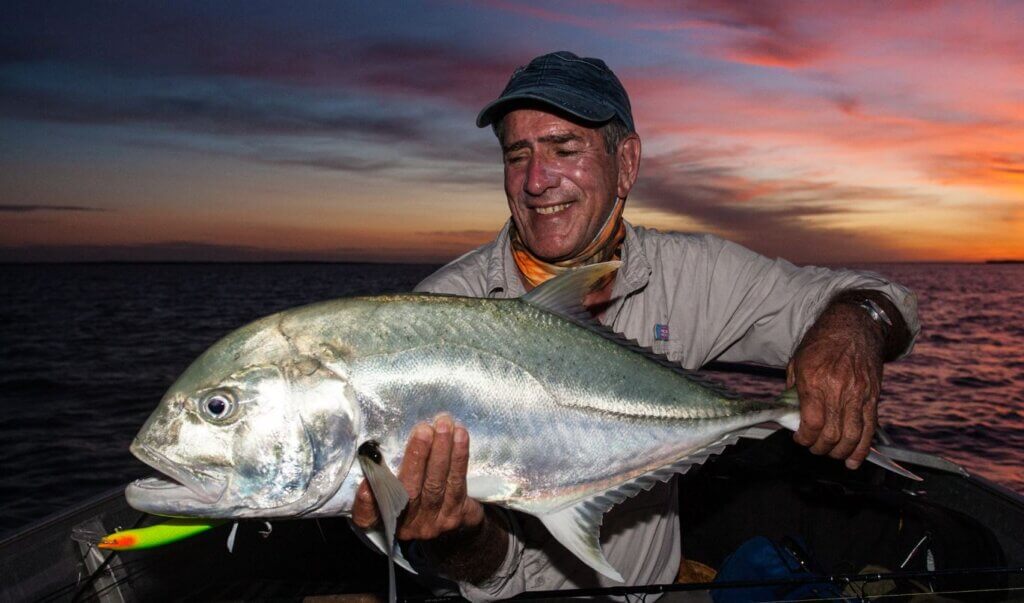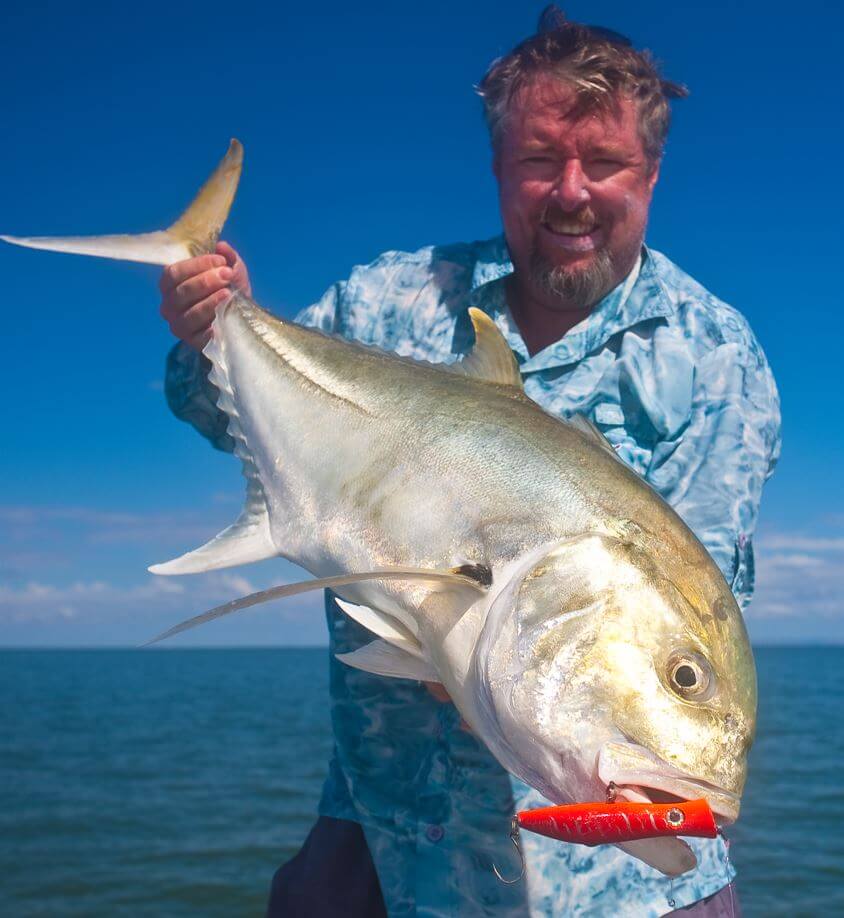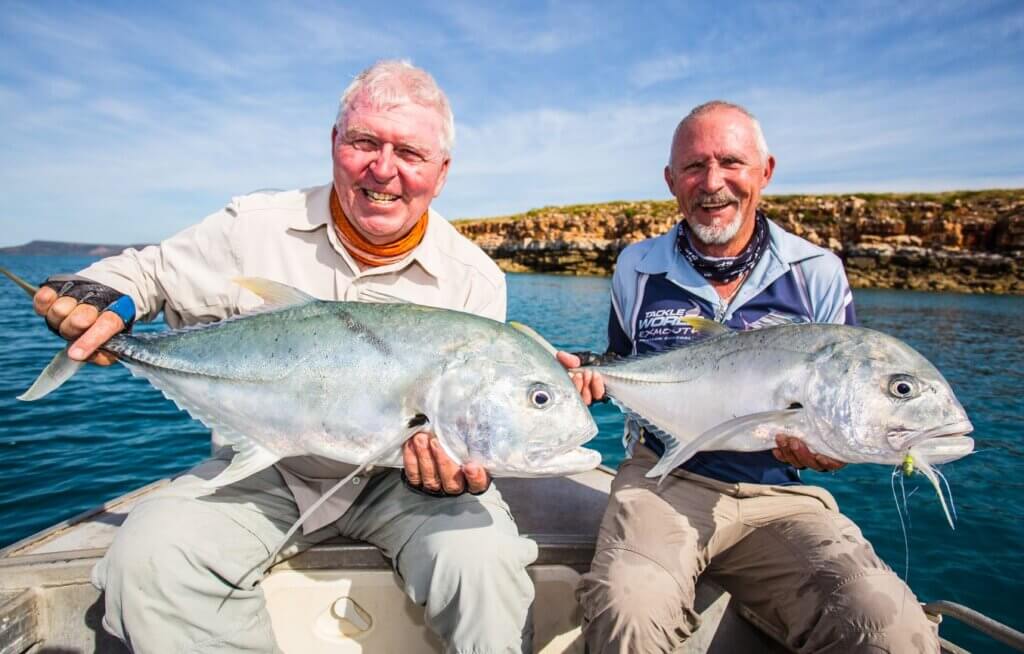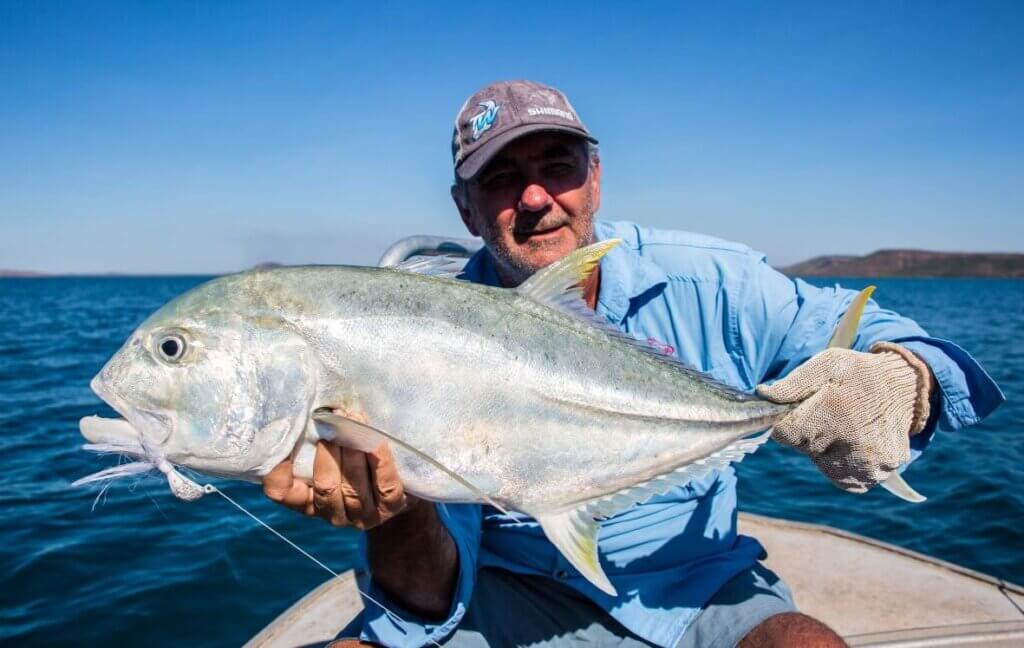Looking almost identical to a giant trevally, the little cousins of the GT are great fun in their own right while not growing to the huge sizes of their close relative, writes Western Angler editor Scott Coghlan in this week’s edition of Scott’s Species.
Fish: Brassy trevally, Caranx papuensis
Eating: 1 star
ID: Very similar to a giant trevally, but with yellow tinge on fins, with a slightly less sloped forehead.

I must admit I really love brassy trevally, perhaps more than I should!
Brassy trevally normally grow to around 85cm, although most caught will be smaller than that.
Found from Exmouth north, I’ve mainly encountered them around Exmouth Gulf, where at times you can find big schools of 6kg to 7kg fish around the shoals.
At that size they are awesome sportfishing, and will hit lures with as much gusto as GTs and pull hard for their size.
One of the main things I love about brassys is they are rarely travelling alone and usually appear in numbers.
I have fond memories of a day where we had them busting up all around us for hours down the bottom end of the Gulf and I hope to encounter that again one day.
“I must admit I really love brassy trevally, perhaps more than I should,” Scott Coghlan.
My biggest brassy was caught near Wilderness Island, and took a Halco Roosta popper cast against a rocky outcrop.

It was a spectacular surface strike that would do any GT proud and put up a great fight.
They are often found around structure, whether that be rocky headlands, sandbars, islands or reefs.
Small fish also show up in ridiculous numbers in the shallows at times and can be very entertaining on light tackle, hitting any lure that they see.
When the small brassys show up it is not uncommon to catch two fish on a lure with multiple hooks.
While they will happily take baits they really are a great target for lures.
Any of the approaches that work on the various trevally species will work on brassys.

Their aggressive nature means surface lures like stickbaits and poppers are an ideal way to chase them and gain the most from the experience.
They’ll happily takes flies and metals, as well as bibbed minnows.
In fact, I reckon fired-up brassies would hit an unbaited hook with little hesitation!
Style of retrieve is not vital, you just need a bit of action on the lure to trigger their attacks.
I wouldn’t worry about eating them unless you were very hungry, just kiss them and let ‘em go!
